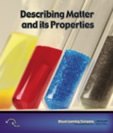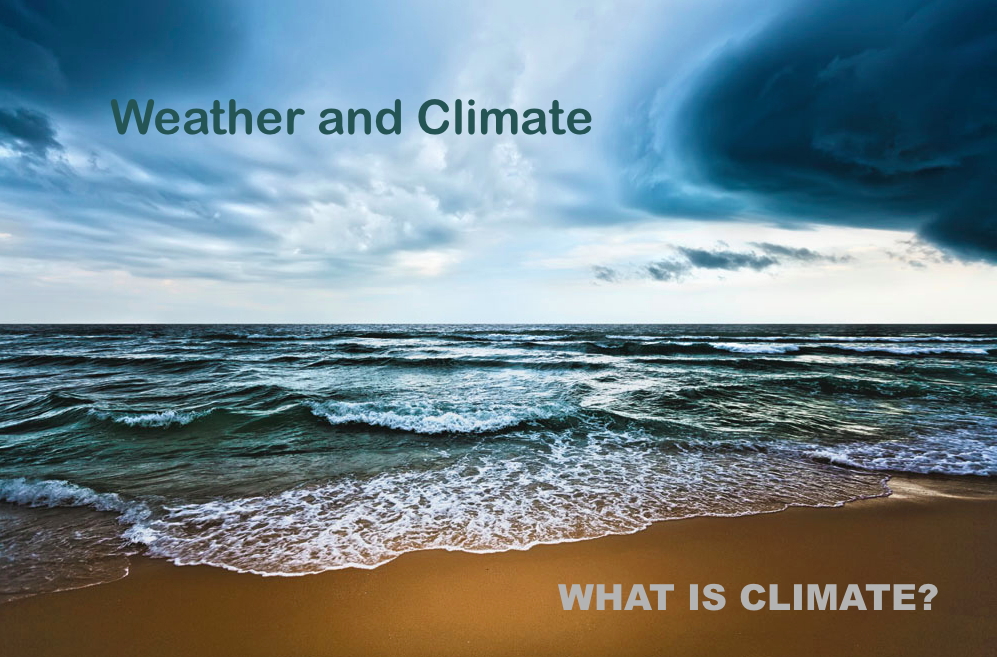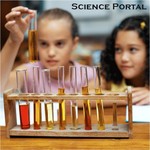| Picture |
Assessments
|
MS-PS1-1

Matter
Formative Assessment Goes Here
packet
- Quia Vocab and Concepts Quizzes
- practice assessments packet
|
MS-PS1-1 Develop
models to describe the atomic composition of simple molecules and extended
structures.
[Clarification Statement: Emphasis is on
developing models of molecules that vary in complexity. Examples of simple
molecules could include ammonia and methanol. Examples of extended
structures could include sodium chloride or diamonds. Examples of
molecular-level models could include drawings, 3D ball and stick
structures, or computer representations showing different molecules with
different types of atoms.] [Assessment Boundary: Assessment does not
include valence electrons and bonding energy, discussing the ionic nature
of subunits of complex structures, or a complete description of all
individual atoms in a complex molecule or extended structure is not
required.]
Obtaining, Evaluating, and Communicating Information
● Communicate scientific and/or technical information (e.g. about a
proposed object, tool, process, system) in writing and/or through oral
presentations. Students could communicate scientific information through
oral presentations [about how] substances are made from different types of
atoms, which combine with one another in various ways [and that] atoms
form molecules that range in size from two to thousands of atoms. MS-PS1-1
Scientific Knowledge is Open to
Revision in Light of New Evidence
● Scientific
explanations are subject to revision and improvement in light of new
evidence.
Students could [use the history of the discovery that]
substances are made from different types of atoms, which combine with one
another in various ways [to describe how] scientific explanations are
subject to revision and improvement in light of new evidence. MS-PS1-1
|
MS-PS1-4.

Heat
Formative Assessment Goes Here packet
|
MS-PS1-4 Develop a model
that predicts and describes changes in particle motion, temperature, and
state of a pure substance when thermal energy is added or removed.
[Clarification Statement: Emphasis is on
qualitative molecular-level models of solids, liquids, and gases to show
that adding or removing thermal energy increases or decreases kinetic
energy of the particles until a change of state occurs. Examples of models
could include drawing and diagrams. Examples of particles could include
molecules or inert atoms. Examples of pure substances could include water,
carbon dioxide, and helium.]
Constructing Explanations and Designing Solutions
● Construct an explanation using models or representations.
Students could construct an explanation [about] the changes of state that occur with variations in temperature or pressure using models of matter. MS-PS1-4
Stability and Change
● Explanations of stability and change in natural or designed systems can be constructed by examining the changes over time and forces at different scales, including the atomic scale.
Students could construct explanations of the changes of state [of matter] that occur with variations in temperature or pressure in natural systems by examining the changes over time and forces at different scales, including the atomic scale. MS-PS1-4
|
MS-PS3-3.

Heat
Formative Assessment Goes Here
Thermal Energy Project MS-PS3-3
- Quia Vocab and Concepts Quizzes
- practice assessments packet
|
MS-PS3-3 Apply scientific
principles to design, construct, and test a device that either minimizes
or maximizes thermal energy transfer.
[Clarification Statement: Examples of
devices could include an insulated box, a solar cooker, and a Styrofoam
cup.] [Assessment Boundary: Assessment does not include calculating the
total amount of thermal energy transferred.]
Planning and Carrying Out Investigations
● Conduct an investigation and/or evaluate and/or revise the experimental design to produce data to serve as the basis for evidence that meet the goals of the investigation.
Students could conduct an investigation [of how] the relationship between the temperature and the total energy of a system depends on the types, states, and amounts of matter present. MS-PS3-3 |
MS-PS3-4.

Heat
Formative Assessment Goes Here
Heat Transfer from Metals to Water
-
Lab Write-Up
-
Mass &
Material
- Quia Vocab and Concepts Quizzes
- practice assessments packet
|
MS-PS3-4 Plan an
investigation to determine the relationships among the energy transferred,
the type of matter, the mass, and the change in the average kinetic energy
of the particles as measured by the temperature of the sample.
[Clarification Statement: Examples of
experiments could include comparing final water temperatures after
different masses of ice melted in the same volume of water with the same
initial temperature, the temperature change of samples of different
materials with the same mass as they cool or heat in the environment, or
the same material with different masses when a specific amount of energy
is added.] [Assessment Boundary: Assessment does not include calculating
the total amount of thermal energy transferred.]
Using Mathematics and Computational Thinking
● Apply mathematical concepts and/or processes (e.g., ratio, rate, percent, basic operations, simple algebra) to scientific and engineering questions and problems.
Students could apply mathematical concepts to scientific questions [about how] the relationship between the temperature and the total energy of a system depends on the types, states, and amounts of matter present. MS-PS3-4
Science is a Way of Knowing
● Science is both a body of knowledge and the processes and practices used
to add to that body of knowledge.
Students could describe that science
is both a body of knowledge and the processes and practices used to add to
that body of knowledge [as they plan for an investigation about] the
amount of energy transfer needed to change the temperature of a matter
sample. MS-PS3-4 |
MS-ESS2-4.

Water Cycle
Formative Assessment Goes Here
Packet
- Quia Vocab and Concepts Quizzes
- practice assessments
Packet
|
MS-ESS2-4 Develop a
model to describe the cycling of water through Earth’s systems driven by
energy from the sun and the force of gravity.
[Clarification Statement: Emphasis is on the
ways water changes its state as it moves through the multiple pathways of
the hydrologic cycle. Examples of models can be conceptual or physical.]
[Assessment Boundary: A quantitative understanding of the latent heats of
vaporization and fusion is not assessed.]
Developing and Using Models
● Develop a model to describe unobservable mechanisms.
Students could develop a model to describe [how] water continually cycles among land, ocean, and atmosphere, [including] unobservable mechanisms [of the processes of] transpiration and evaporation. MS-ESS2-4
Engaging in Argument from Evidence
● Respectfully provide and receive critiques about one’s explanations, procedures, models, and questions by citing relevant evidence and posing and responding to questions that elicit pertinent elaboration and detail.
Students could respectfully receive critiques about models [of] global movements of water and its changes in form [and how
Systems & System Models
● Systems may interact with other systems; they may have sub-systems and
be a part of larger complex systems. Students could describe that systems
may interact with other systems; they may have sub-systems and be a part
of larger complex systems within the context that water continually cycles
among land, ocean, and atmosphere via transpiration, evaporation,
condensation and crystallization, and precipitation, as well as downhill
flows on land. MS-ESS2-4 |
MS-ESS2-5.

Weather & Climate
Formative Assessment Goes Here
packet
- Quia Vocab and Concepts Quizzes
- practice assessments
packet
|
MS-ESS2-5 Collect data
to provide evidence for how the motions and complex interactions of air
masses result in changes in weather conditions.
[Clarification Statement: Emphasis is on how
air masses flow from regions of high pressure to low pressure, causing
weather (defined by temperature, pressure, humidity, precipitation, and
wind) at a fixed location to change over time, and how sudden changes in
weather can result when different air masses collide. Emphasis is on how
weather can be predicted within probabilistic ranges. Examples of data can
be provided to students (such as weather maps, diagrams, and
visualizations) or obtained through laboratory experiments (such as with
condensation).] [Assessment Boundary: Assessment does not include
recalling the names of cloud types or weather symbols used on weather maps
or the reported diagrams from weather stations.]
Obtaining, Evaluating, and Communicating Information
● Critically read scientific texts adapted for classroom use to determine the central ideas and/or obtain scientific and/or technical information to describe patterns in and/or evidence about the natural world.
Students could critically read scientific texts adapted for classroom use to obtain scientific information to describe patterns of the changes and the movement of water in the atmosphere, determined by winds, landforms, and ocean temperatures and currents, [which] are major determinants of local weather patterns. MS-ESS2-5
Energy and Matter
● The transfer of energy can be tracked as energy flows through a designed or natural system.
Students could track the transfer of energy as energy flows through the ocean which absorbs energy from the sun, releases it over time, and globally redistributes it through currents, exerting a major influence on weather and climate. MS-ESS2-6
|
MS-ESS2-6.

Weather & Climate
Formative Assessment Goes Here
packet
- Quia Vocab and Concepts Quizzes
- practice assessments
packet
|
MS-ESS2-6 Develop and
use a model to describe how unequal heating and rotation of the Earth
cause patterns of atmospheric and oceanic circulation that determine
global climates.
[Clarification Statement: Emphasis is on how
patterns vary by latitude, altitude, and geographic land distribution.
Emphasis of atmospheric circulation is on the sunlight-driven latitudinal
banding, the Coriolis effect, and resulting prevailing winds; emphasis of
ocean circulation is on the transfer of heat by the global ocean
convection cycle, which is constrained by the Coriolis effect and the
outlines of continents. Examples of models can be diagrams, maps and
globes, or digital representations.] [Assessment Boundary: Assessment does
not include the dynamics of the Coriolis effect.]
Asking Questions and Defining Problems
● Define a design problem that can be solved through the development of an object, tool, process, or system and includes multiple criteria and constraints, including scientific knowledge that may limit possible solutions.
Students could define a design problem [related to] interactions involving sunlight, the ocean, and ice that can be solved through the development of an object, tool, process, or system and includes multiple criteria and constraints. MS-ESS2-6
Analyzing and Interpreting Data
● Use graphical displays (e.g., maps, charts, graphs, and/or tables) of large data sets to identify temporal and spatial relationships.
Students could use graphical displays (e.g., maps, charts, graphs, and/or tables) of large data sets to identify spatial relationships [related to] weather and climate [as they are] influenced by interactions involving sunlight, the ocean, the atmosphere, ice, landforms, and living things. MS-ESS2-6
|
MS-ETS1-4.

Tech Design
Formative Assessment Goes Here
Packet
- Quia Vocab and Concepts Quizzes
- practice assessments
Packet
|
MS-ETS1-4 Develop a
model to generate data for iterative testing and modification of a
proposed object, tool, or process such that an optimal design can be
achieved.
|





